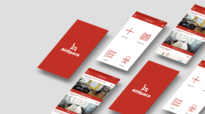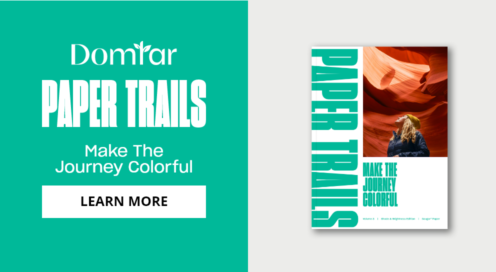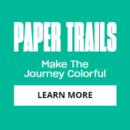Storytelling in UX
Building compelling case studies

Every designer has a story to tell—but not every story leaves an impact. The key difference between portfolios that stand out and portfolios that don’t is often how well the designer tells the story behind their work.
In a recent RGD webinar, Samiksha Makhijani RGD—whose UX design career spans roles at TD Bank, Shutterstock and Circle where she has been at the forefront of integrating Fintech, AI and Cryptocurrency into user-centered design solutions—shared her techniques on how she transforms a standard case study into a narrative that resonates with hiring managers, clients and fellow designers.
This article is a summary of key insights from that session.
RGD members can access the full webinar recording for even deeper learning, including specific examples and a workshop exercise. If you’re not a member yet, joining RGD unlocks exclusive access to webinars, resources, mentorship and community events to support your design growth.
“A story will capture people’s hearts – by first attracting their brains” – Paul J. Zak
Why storytelling matters
Storytelling isn’t just about packaging your work and showing final, polished designs. This won’t win recruiters over. The hiring manager is more likely to be interested in the design journey.
A good case study demonstrates your growth as a designer and reveals your process, challenges and problem-solving skills. It is an opportunity to connect with the reader in an authentic way, as they learn about you and how you work.
The "why" behind your work
In the webinar, Samiksha shares her inspiration from Simon Sinek’s “Golden Circle.” This methodology posits that people don’t just connect with what or how you do things—they connect with the why first, at its core.
“People don’t buy what you do; they buy why you do it.” – Simon Sinek

Case study structure
Using Sinek’s Golden Circle as a guide, we can structure our case studies like so (focusing on starting with “the why”):
Why:
Introduction & context:
Set the stage by explaining the background of the project. Include the product, audience, stakeholder and any relevant constraints or goals.
Problem statement:
Clearly define the specific user problem or user pain point being addressed. Explain why solving this project matters and what impact it could have.
How
Process and methods:
Detail the steps taken to research, ideate and test potential solutions. Highlight methodologies like user interviews, competitive analysis or usability testing.
Design evolution:
Showcase how your design progressed from initial ideas to the final solution. Include sketches, wireframes, prototypes and iterations to demonstrate growth.
What:
Challenges and learnings:
Discuss obstacles faced during the project, such as technical constraints or conflicting feedback. Share what you learned from these challenges and how you adapted.
Outcome and impact:
Present the final solution and how it solved the problem or improved the experience. Use metrics or user feedback to validate the effectiveness of your design.

Add these to your case study, depending on the project
These storytelling approaches may help add to your case study:
The Hero’s Journey:
Position your user as the hero, with your design process as their guide to overcoming their challenges. This works exceptionally well for projects emphasizing empathy and how your design impacts real people.
Example for a Fitness App:
The Hero: Jane, a marketing executive, struggles to log her workouts due to a cluttered interface.
The Guide: By conducting user research and redesigning the app, we simplified navigation and prioritized essential features.
The Resolution: Jane now logs her workouts effortlessly, stays on track with her fitness goals and feels less stressed about her routine.
Before and After:
Best suited to projects with strong visual transformations, clearly illustrating the improvements your design created.
Example for a Fitness App:
Before: The dashboard was overcrowded, making it hard to find essential features. Users had to navigate multiple screens just to log a workout.
After: A redesigned dashboard now focuses on simplicity, with one-click workout tracking. Engagement increased by 25% post-redesign.
Visuals: Include screenshots of the old cluttered dashboard and the new streamlined version.
Challenges and Triumphs:
Ideal for complex or challenging projects, highlighting your adaptability, resilience and growth in overcoming hurdles.
Example for a Fitness App:
Challenge: Initial testing revealed that users misunderstood the dashboard icons, leading to frustration and task abandonment.
Triumph: Through iterative design, we introduced intuitive icons and descriptive labels, improving usability by 40%.
Takeaway: The process wasn’t linear, but adapting to feedback led to a more user-friendly design.
Data-driven narratives:
When you have metrics and concrete numbers, highlight them and let the data speak for itself.
Example for a Fitness App:
Insight: Analytics showed 40% of users abandoned the app within the first week due to navigation challenges.
Action: We simplified the dashboard layout and added progress indicators.
Impact: User retention increased by 20% in the first month post-redesign.
Visuals: Present graphs comparing engagement rates before and after the redesign.
Final thoughts
When developing a UX case study, remember that it is more about the journey than just the destination. Embrace challenges, demonstrate your growth and tell genuine stories. People (hiring managers, colleagues, clients, etc.,) connect with authenticity, not perfection.
Plus, beyond a strong portfolio, storytelling is a powerful skill in your career. Clear, authentic storytelling positions you as a strategic, thoughtful designer, helping you influence stakeholders, communicate your rationale and advocate effectively for users.
Samiksha encourages designers to adopt a "growth designer" mindset—openly embracing challenges, continuously learning and clearly articulating their design journey.
Want to explore deeper storytelling insights and see practical examples? RGD Members can access the full webinar recording featuring Samiksha’s detailed presentation and interactive exercises.
Not an RGD member yet? Join today to unlock exclusive access to professional resources, educational and inspirational webinars, mentorship and a supportive community designed to help you thrive in your UX career.

Katrina Lovrick
Katrina Lovrick is a specialist in UX—focusing on products that meet both user and client goals, and spark joy. She particularly works on projects in the government, education, financial, and healthcare sectors. She is also a Course Director and Instructor at York's Design Program, teaching Visual Interaction Design.

Samiksha Makhijani RGD
Zero Hash
















